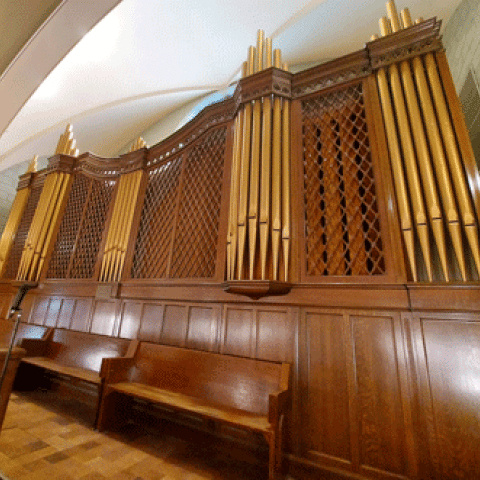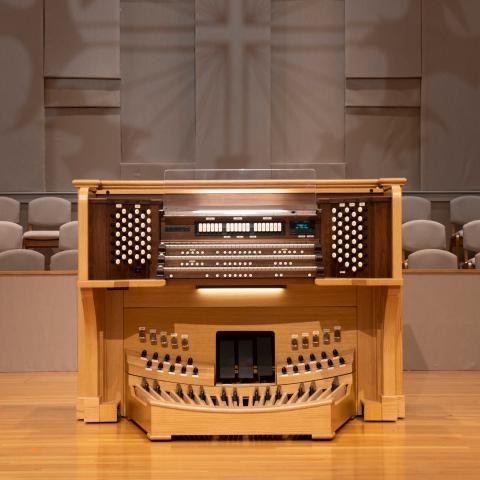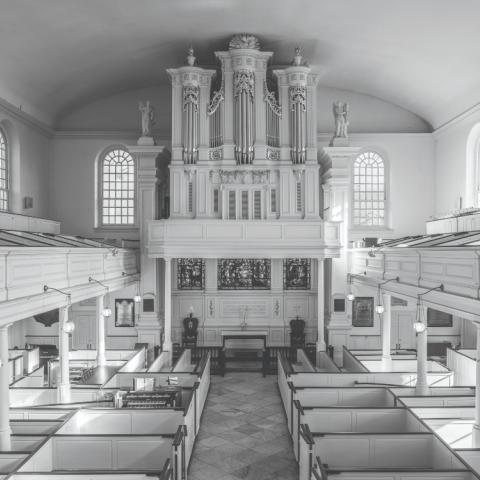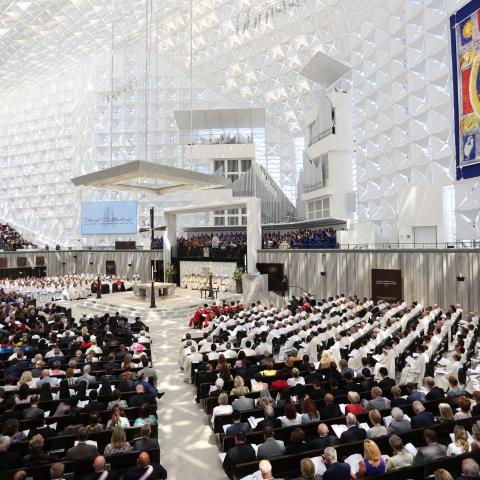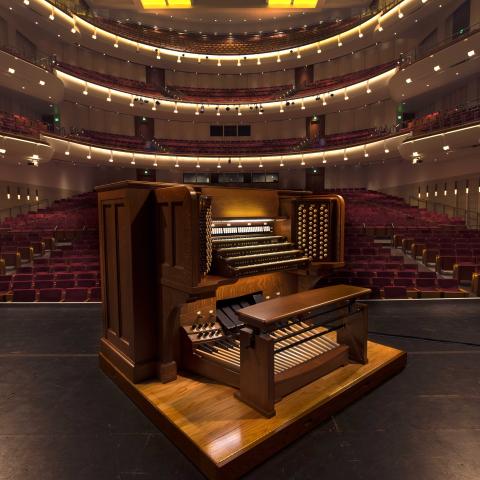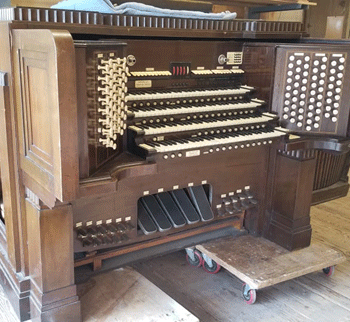
The University of North Texas, Denton, has acquired a four-manual drawknob console, originally from M. P. Möller Opus 5819 built in 1931 for the Civic Center of Philadelphia, Pennsylvania, for installation in the university’s main auditorium, which already houses a large Möller organ, Opus 7676, built in 1949. (Opus 5819 also had a four-manual, theatre-style console.) The console came with 17 of the organ’s original 86 ranks, including a 32′/16′/8′/4′ Bombarde unit, 32′ Bourdon, five-rank Fourniture, five-rank Tierce Cymbale, Doppelflute, French Horn, English Horn, French Trumpet, and Clarion. The University of Oklahoma, which divested of the entire organ in 2020–2021, donated these items to the University of North Texas.
As luck would have it, North Texas was in the process of planning structural work on the walls surrounding its Möller organ, necessitating the temporary removal of the entire instrument. These additions will be blended with Opus 7676 when the organ is returned to its space during summer 2022, bringing it to close to 80 ranks. Redman Pipe Organs is doing the work, which will be completed in fall 2022 with a November inauguration planned.
For information: unt.edu and redmanpipeorgans.com.
Other organ builder news:
Marceau Pipe Organs to restore Möller Opus 7270

